How to use leftovers
We can't believe that £2.4bn of household food is thrown away every year, adding up to £200 in wasted food per person. This has to stop! We've rounded up our top tips and recipe ideas for how to use leftovers.

If you've got food left over, there's no need to waste it. With a bit of clever thinking, you can turn tonight's dinner into tomorrow's lunch!
This simple guide will show you what to do with your leftover veggies, cuts of meat and extra portions - you'll save money, waste less and eat better too! Sound good? Then let's get started...
Shocking new stats estimate that we bin 7.1 million tonnes of food every year in the UK, according to the Waste and Resources Action Programme (WRAP).
Figures from WRAP show that each day households in the UK throw a colossal amount of food and drink, including the following (approximate figures):
- 20 million whole slices of bread (equivalent to 1,000,000 loaves at 20 slices per loaf)
- 4.4 million whole potatoes
- 920,000 whole bananas
- 1.2 million whole tomatoes
- 86,000 whole lettuce
- 3.1 million glasses’ worth of milk
What can we do?
Wouldn't it be great to cut your shopping costs, the time you spend hunting the aisle in the supermarkets and the waste that stinks up your bin in the kitchen - as well as doing your bit for the planet? Well, we're here to help you do exactly that with our tips on storing fresh food so it keeps fresh longer, and using up leftovers. You'll be saving money on your food shop and you'll be cutting down on your food waste too.
Don't throw that away!
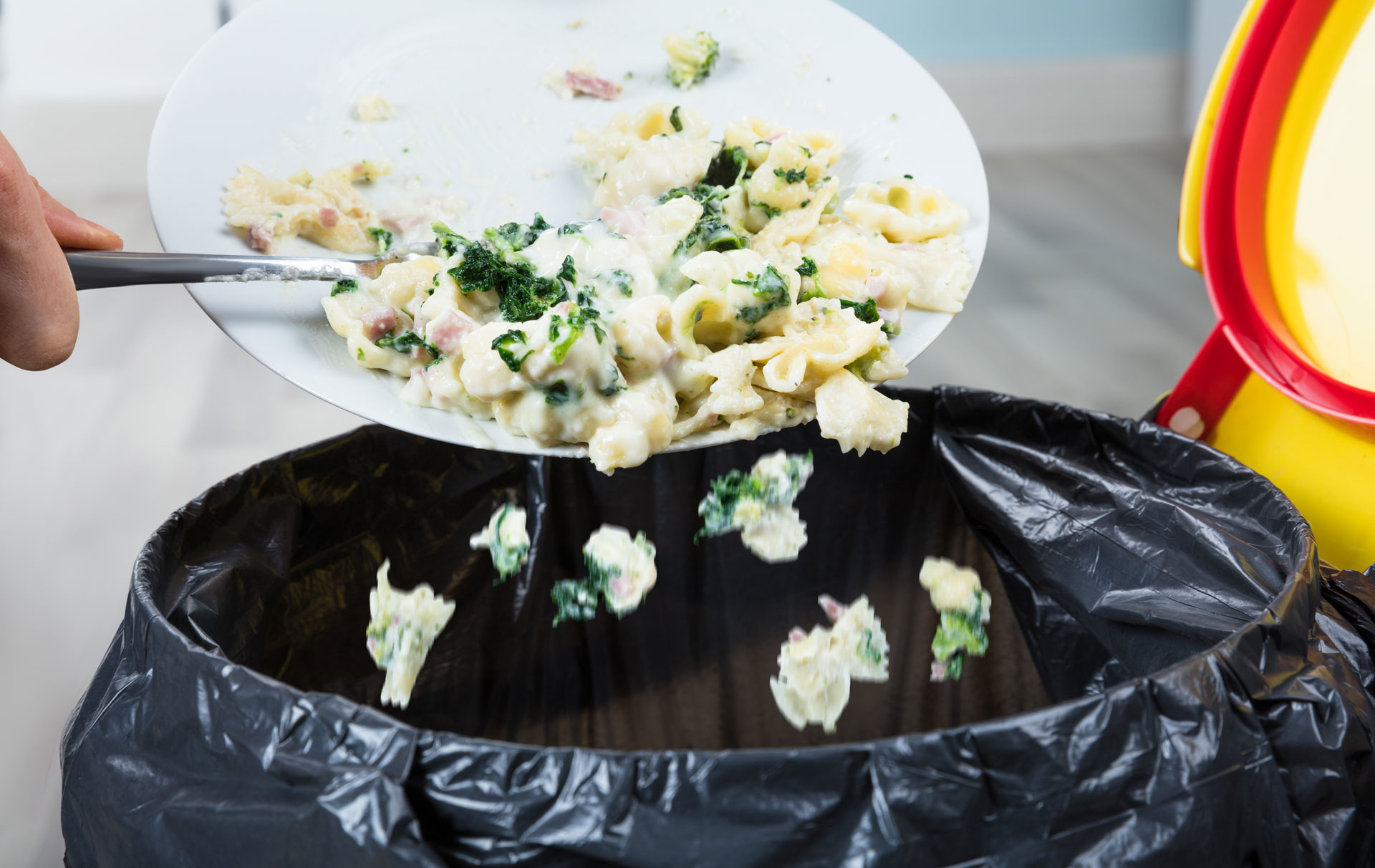
Did you know that a lot of the food that we throw away on a regular basis can actually be used again? Mashed potato leftover over from last night's dinner can be used to make gnocchi for lunch, rice can be stored in the freezer for next time you need it and Sunday's roast veggies can be made into a healthy soup. The possibilities are endless and we're here to show you exactly how to make the best out of your food shop from shopping basket to storage, you'll see no good food go to waste again.
What to do with leftovers: meat
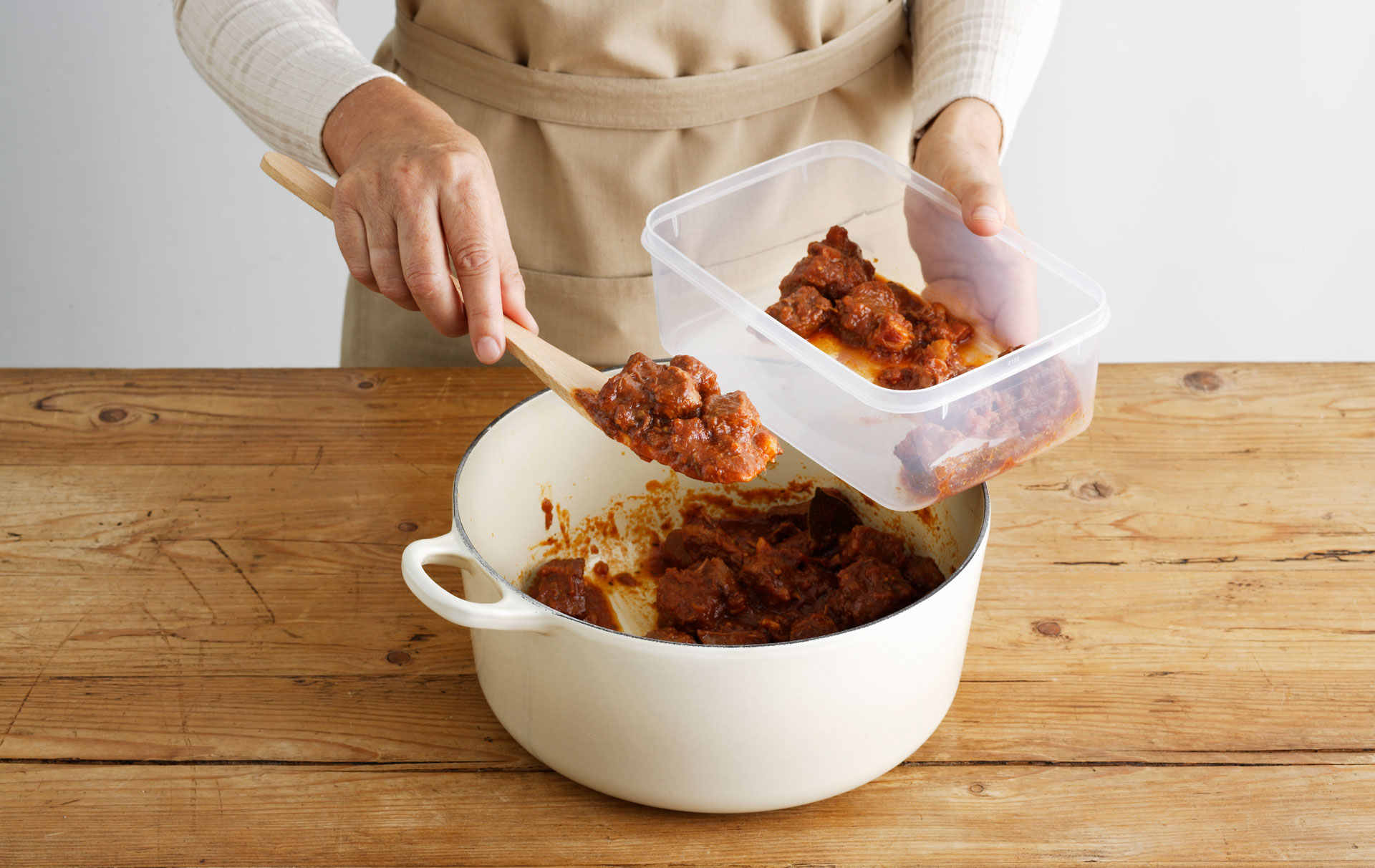
Poultry
- How to store - fresh: Poultry can be stored in the fridge or freezer. Make sure it is defrosted properly before cooking, if stored in the freezer.
- How to store - cooked: Cooked chicken, turkey or duck can be kept in the fridge for up to 2 days or frozen for up to 3 months.
- How to use: If you've got leftover chicken from your roast dinner this can be added to a curry, risotto or stir-fry to bulk your dish up. It can also be added to pies or served cold with salad for lunch. Other poultry can be used in this way too.
- How to re-heat: You can re-heat in the microwave, cook in sauce or once again in the oven. Make sure the poultry is piping hot all the way before serving through.
- Top tip: Cut your leftover poultry into strips and freeze in zip lock bags. Add handfuls of stir-fries and curries when neccessary.
Red meat
- How to store - fresh: Red meat is best stored in individual portions e.g. beef steaks or lamb chops. Store in the fridge for a few days or in the freezer for up to 1 month. Make sure you thaw your meat properly before cooking.
- How to store - cooked: Cooked red meat can be stored in the same way but is best served within 2 days of storing in the fridge.
- How to use: Chunks of cooked beef, lamb or pork are perfect for adding to salads, soups or curries. Try making a hearty pie with your leftovers or mix with some rice for a pilaf-style dish.
- How to re-heat: Cooked meat can be added to sauces and boiled, fried in stir-fries or microwaved for a quick re-heat technique.
- Top tip: Buying red meat in bulk is a great way to save money. You can often find good deals online or in most supermarkets but shop around before you settle for the best bargain.
Fish
- How to store - fresh: Fish is best stored in the fridge, fresh and eaten as soon as possible for the best taste and quality. It can be frozen immediately once bought.
- How to store - cooked: Fish should not be frozen twice - so once it's cooked from frozen don't put in the freezer again - you'll lose the flavour and may risk contaminating the fish.
- How to use: Any leftover chunks of fish can be mixed with a jar of white sauce and topped with mash to make a hearty fish pie or if you've cooked a fillet of salmon, for example, flake the fish and make a pasta bake, risotto or fish cake with it.
- How to re-heat: You can re-heat fish in the microwave but remember that it can dry out pretty quickly. We'd recommend re-heating the fish on a low heat in the oven for about 15 mins until hot.
- Top tip: If you're going to freeze your fresh fish, do it in portions. This way you won't waste any when it comes to defrosting and cooking.
Mince
- How to store - fresh: Minced meat can be stored in the fridge or freezer - if stored in the freezer, defrost throughly before cooking. If storing in the fridge, make sure you use it by the date it says on the packaging.
- How to store - cooked: Cooked mince can be kept in the fridge for a few days or in the freezer for up to 3 months.
- How to use: Minced meat is the perfect example of leftover food that can be transformed into different meals. You can make spag Bol, chilli con carne or bulk up with lentils, veggies or mixed beans to make your mince stretch up to 3 days worth of food in one.
- How to re-heat: Mince can be re-heated in the microwave, oven or in sauce on the hob. Serve piping hot and continuously stir to make sure the whole portion of mince is heated through.
- Top tip: You can buy frozen mince in bulk which is great for large families. Just make sure you have enough room in the freezer. And if you're trying to be healthy use turkey mince instead of beef as its much lower in fat.
What to do with leftovers: vegetables
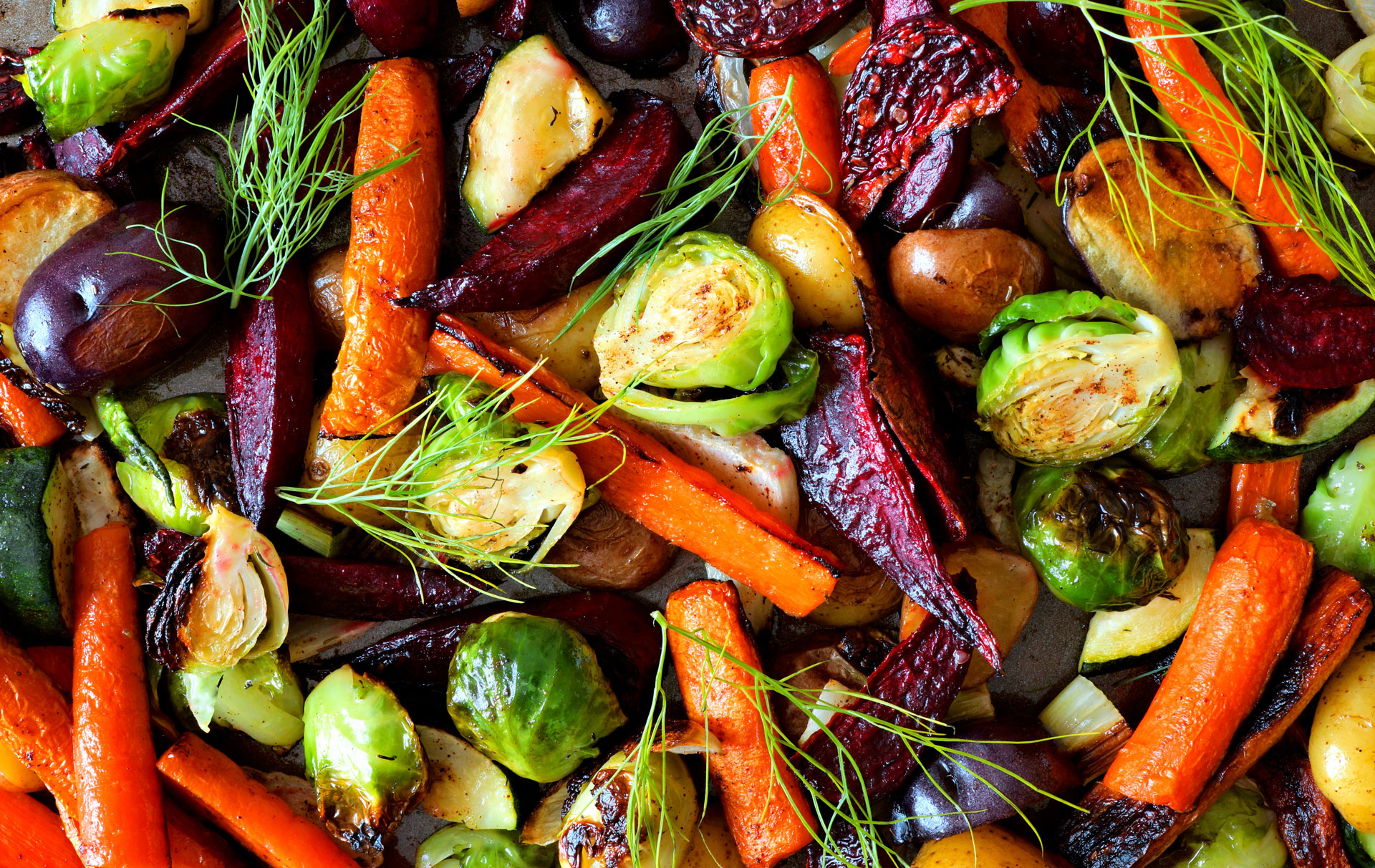
Always find that the veggies on the side of your dish are the thing leftover from your dinners? They can be easily re-used - in ways they'll actually eat them, too!
GoodtoKnow Newsletter
Parenting advice, hot topics, best buys and family finance tips delivered straight to your inbox.
Vegetables
- How to store - fresh: Fresh vegetables are best kept in the fridge. You can buy frozen veggies or slice fresh ones to freeze. Potatoes and sweet potatoes need to be kept in a cool, dry place but other vegetables are kept fresher longer in the fridge. Just make sure you keep the onions away from other fruit and veggies in the fridge otherwise they'll absorb the smell - you don't want a pear that tastes like onion now do you?
- How to store - cooked: Cooked veggies are best stored in a bowl covered in clingfilm in the fridge and should last for a few days. You can freeze chunks of cooked vegetables - they're great to add to Bolgonese mixtures or soups.
- How to use: Leftover veg from your Sunday roast can be mashed together and combined with egg, fried and served for lunch as bubble and squeak. Cooked veg can be blended with warm stock to create lots of different soups. You also add leftover veggies to omelettes or tortillas or serve with mixed dips such as hummus as a light snack.
- How to re-heat: Veggies are pretty easy to re-heat and can be warmed up in microwave or fried on a low heat. Bake in the oven or roast in a tin with leftover chicken to make a tray bake. You can even serve them cold for a healthy salad.
- Top tip: Drying your veggies is a great way of preserving them. This can be done in the oven on a low heat. You can make vegetable crisps too which make a perfect lunchbox snack.
What to do with leftover ingredients
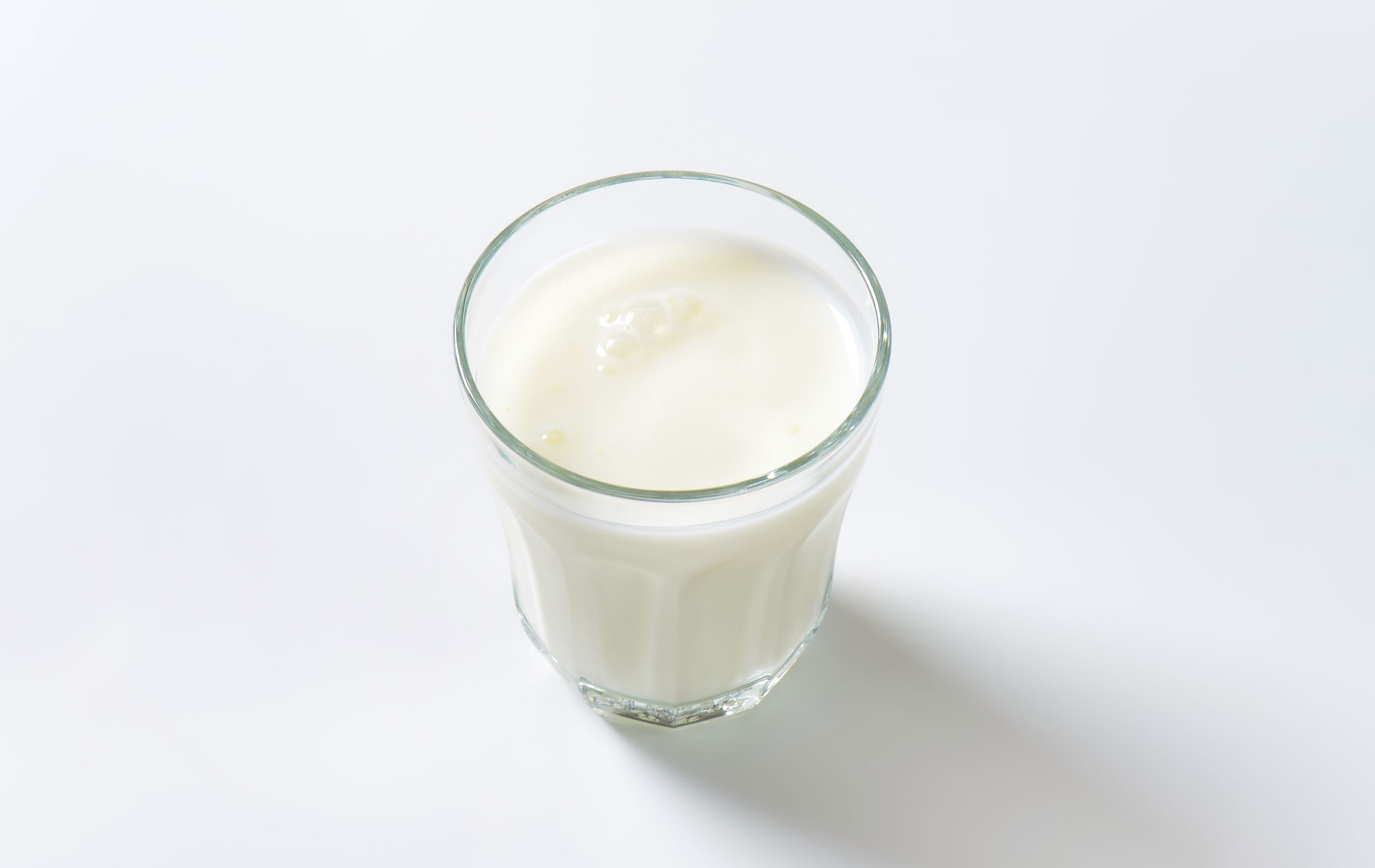
There's always the odd apple or pear in the bottom of the fridge, half a carton of yogurt that's about to run out of date and many other leftover products which we just never seem to know what to do with. From fruit to buttercream, use up every item in your kitchen this week!
Fruit
- How to store: Fruit can be stored in both a fruit bowl and in the fridge. Apples, pears and oranges can be kept in both, but last longer if kept in the fridge. Bananas are best in the fruit bowl. Keep all your berries in the fridge otherwise they'll get soggy and loose taste. If you spot that your fruit is about to go bad, stick it in the freezer so it lasts longer. You'll need to defrost bananas before using but frozen berries can be used straight from the freezer.
- How to use: Leftover fruit can be used in cakes, in desserts, smoothies and more! Brown bananas are perfect for making a banana cake and leftover blueberries can be transformed into blueberry muffins.You can make a fruit salad with all your leftovers too - just chop them up, put them in an airtight container and drizzle with orange juice or lemon juice to preserve them for a few days.
- Top tip: A great way to make your fruit last is by freezing it - berries, for example work really well in the freezer and take no time at all to defrost.
Sauces
- How to store - fresh: If it's freshly-made sauce from scratch, it's best to store this in the fridge and use as soon as possible. If you've made a large batch of homemade sauce such as a classic Bolognese, pop into an airtight container, label and freeze until ready to use. With shop-bought sauces it's best to refer to the packaging.
- How to use: If you've made a chilli con carne and have some sauce leftover, don't bin it! This can be added to a tin of chopped tomatoes and kidney beans to make a lightly spiced chilli another time. If you've got white sauce leftover from a lasagne stretch it even further by whisking in some milk or cream - this means you can get two portions of lasagne out of one jar!
- How to re-heat: Sauces can be warmed through on the hob or re-heated in the microwave. Serve warm.
- Top tip: Don't be afraid to experiment and mix together different sauces for different flavours or combine them to make a completely new sauces.
Buttercream
- How to store: If you're an avid baker you might find that you over do it with the buttercream and end up making a little bit too much. Just pop into a sandwich bag and tie with an elastic band or store in an airtight container up to 5 days. You can also freeze buttercream up to 3 months.
- How to use: Leftover buttercream can be added to a new batch of buttercream to bulk it up. For example, leftover chocolate buttercream teamed with plain vanilla makes an impressive marble effect piped on the tops of your cakes. Buttercream can make a sweet dessert topping for tarts or puds too, instead of whipped cream.
- Top tip: If you've stored your leftover buttercream in the freezer, leave it to thaw in the fridge overnight and then leave it to reach room temperature before whisking and adding to your cakes. You need to make sure you whisk your buttercream with a strong arm or electric whisk to get it back to a standard buttercream texture - lump free!
The basics
- Milk: If your milk is getting close to its use-by date, you can add it to rice, a sprinkle of cinnamon and some sugar and bake in the oven to make rice pudding for dessert. If you've got small dregs of milk at the bottom of your carton, add some water, slosh around and feed your houseplants - the calcium in the milk will help them grow!
- Eggs: Eggs can still be used a few days after their use-by date, you just need to check their freshness; place the egg into a glass of water and if the egg stays flat at the bottom, it's fresh, if it floats it's ready for the bin. Add extra cakes to a cake mix or if you catch them just before they go off, boil them until hard, leave to cool and then peel the shell off. Mash in a bowl with some mayonnaise or salad cream and season with pepper and you've made yourself an egg mayonnaise sandwich filler!
- Yogurt: If you've got a few tablespoons of yogurt sitting in the bottom of the pot, add to your curry recipe for creamy finish, add to your cake for an extra moist sponge or blitz with fresh berries to make smoothie. This can also be popped into the freezer to make a simple and delicious frozen yogurt.
- Cheese: If you've got half a block of cheese left over or just want to save some room in the fridge, grate your cheese into a zip lock bag and freeze in portions or pop back into the fridge and use within 3-4 days.
What to do with leftovers: baked goods
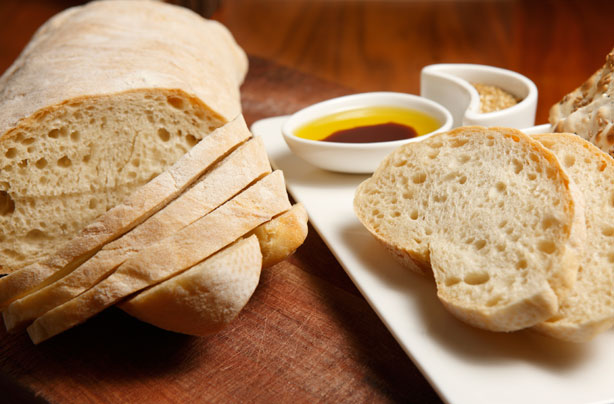
It can be pretty frustrating when you've made a delicious cake for the whole family or a fresh loaf of bread and there's some leftover that you have to chuck - well, now you don't! From bread and butter pudding to cheesecakes, there are plenty of ways to turn your baked leftovers into more delicious treats.
Cake
- How to store: Cake is best stored in an airtight Tupperware box in a cool place in the kitchen. Cakes with buttercream or chocolate-based decorations are best kept in the fridge. Uniced cake can also be frozen for up to 3 months.
- How to use: If there's a rare chance that you have some cake left over and it's a bit on the stale side, never fear - it doesn't have to be chucked! A Victoria sponge cake is perfect crumbled and mixed with candy melts or buttercream to make cake pops. Or if you've got some brownies leftover, break them up in chunks, pop them into the microwave and warm through for 10-20 seconds and serve with heaps of ice cream and chocolate sauce for a naughty dessert! This method works really well with chocolate cake too.
- Top tip: If you've made a cake for a future occasion or you're just not ready to serve it yet, it can be popped into the freezer (without decorations like buttercream or edibles) until it's ready to be used, this is handy when making cakes for parties.
Bread
- How to store: You can store bread in a bread bin in its original packaging. You can also freeze bread which is ideal if you don't think you'll use it all by the use-by date. Breadcrumbs can be kept in a sandwich bag in the fridge until needed but make sure you use within a few days to avoid mould spores or you could always try freezing them.
- How to use: If you've got a few slices of bread left over, or the ends that nobody wants to eat, there's no need to chuck them away! Blitz in a blender to make breadcrumbs - sprinkle on pasta bakes or lasagne for an extra-crispy topping or use your breadcrumbs as a coating for fish or meat. Slightly stale bread is perfect for bread and butter pudding or even eggy bread, so think twice before you chuck those last few slices away!
- Top tip: Some people like to keep bread in the fridge. This is a good way of storing it too but the coolness of the fridge can absorb the moisture from the bread - so don't keep it in there for too long otherwise you'll end up with really dry sandwiches.
Biscuits
- How to store: Biscuits are best kept in an airtight container or wrapped well in a sandwich bag. If the packets are left loose the biscuits will become stale very quickly. Homemade biscuits should be kept in a Tupperware box and eaten within a few days for the best flavour.
- How to use: Leftover biscuits in the biscuit tin? Blitz them in a blender and use them as a base for a delicious cheesecake or mix together all your broken biscuits and serve with some ice cream and fresh fruit in a tall sundae glass.
- Top tip: Some biscuits can be kept in the fridge to keep them fresher for longer. Chocolate chip cookies are a good example of this but don't leave them in there too long otherwise they'll loose their taste and crunch.
How to store leftovers safely
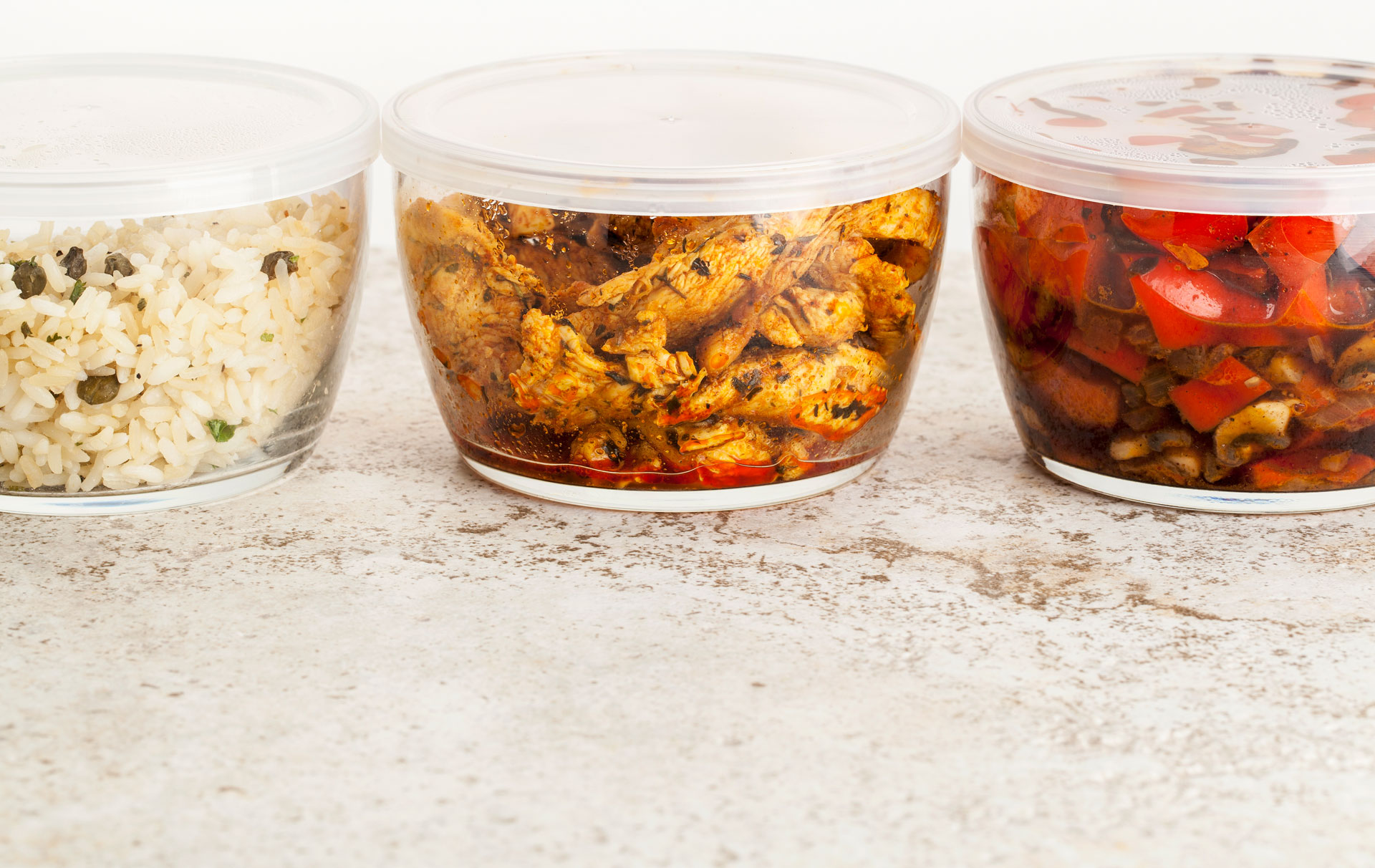
We caught up with food waste experts Love Food Hate Waste to find out their top expert tips for storing leftovers. From freezer tips to avoiding food poisoning - here are Love Food Hate Waste's Emma Marsh's top 10 leftover tips to making the most of your leftovers safely
- Always store leftovers in the fridge - cool them as quickly as possible, ideally within 90 minutes, cover them (for example in a Tupperware pot, old clean margarine tub, a dish with clingfilm on top) pop them into the fridge and remember to eat them within two days.
- Make sure your fridge is at the correct temperature, it should be below 5°C. By keeping food cold, you stop food poisoning bugs growing.
- Freezing leftovers is a great way to save tasty meals for a later date. Cool them first and cover (as with the fridge). Once they are in the freezer they can be safely stored there forever really, but the quality and taste will gradually deteriorate so it's best to eat them within three months.
- Avoid the issue of UFOs in your freezer: Unidentified Frozen Objects! Don't forget to label them with what they are and the date - you'll know then whether you're having a curry, a stew, stewed apples or soup for tea!
- When you want to use your frozen meal make sure you defrost them carefully first. If you're going to cook them straightaway use a microwave but if you don't have a microwave, defrost them in the fridge overnight. Eat within 24 hours of defrosting and don't refreeze. The only exception to this is if you are defrosting raw food, such as meat or poultry, which can be refrozen once it has been cooked.
- Always cook leftovers until steaming hot throughout and don't re-heat them more than once.
- Even rice can be safely frozen and used at a later date! Check out this short and snappy video showing you how to safely freeze and defrost rice quickly and safely.
- Freezer burn is caused by water molecules leaving the food and can be driven by temperature fluctuations during storage. It typically appears as greyish-brown, dried out patches on the surfaces of frozen / thawed food. It is not a food safety risk and affected areas can be trimmed before use.
- Get to know your date labels! There are a number of dates on food packets but you the use-by date is the only important one as it shows when food may no longer be safe to eat. It's tempting to just give your food a sniff to see if you think it's gone 'off' but food bugs like E.coli and Salmonella don't cause food to smell off so food could look and smell fine but still be harmful. It's therefore very important you stick to the use-by date. Only those foods that could have a safety issue after a period of time (such as meat and fish) will have a use by date - these dates are worked out by scientific testing to make sure we're all safe. Other dates on food are much less important. The best-before date relates to food quality only - it's at its tastiest up to and including this date but if it smells and looks okay, it will still be safe to eat. display until and sell-by dates can be safely ignored by us all - they are just there to help shop staff to manage stock. Love Food Hate Waste have a handy guide to labels for your fridge here. Once food with a ‘use-by' date has been opened, follow any storage instructions such as ‘eat within 3 days of opening'.
- And finally, remember you can eat any food right up to and including the use-by date shown. You can also freeze food right up to the date if you know you won't be able to eat it in time - you don't have to freeze it the same day you bought it.
What can I make with leftovers?
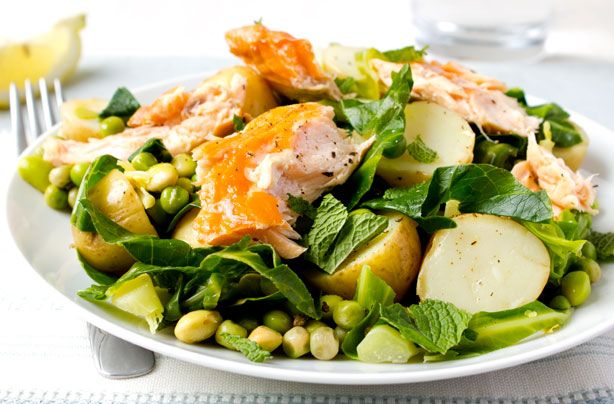
There are plenty of things you can make with your leftovers - you really don't have to bin as much as you think! From simple soups to healthy salads, there are many different ways to use up those unwanted ingredients and turn them into delicious meals or sweet treats here are some of our favourites...
Soup
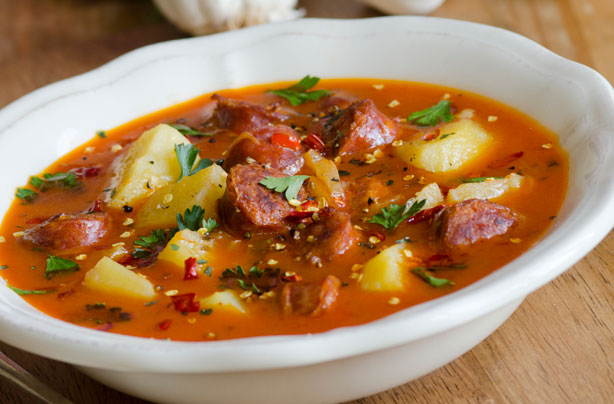
Soup is one of the easiest things to make from leftovers. All you need is some stock; which can be made using a chicken, beef or vegetable stock cubes and some boiling water or leftover juices from your Sunday roast which have been kept in the fridge. Blend with your leftover veggies and meat and you've got a delicious soup that can be served immediately or cooled and frozen for another time. Store in portions and label.
Baby food
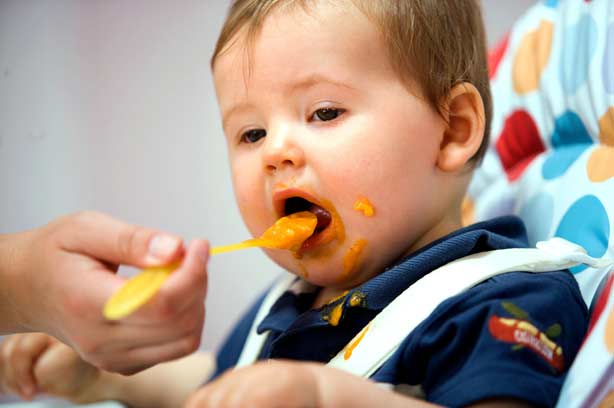
If you've got a baby in the family, leftovers are perfect for giving your little one some well needed nutrients. Mashed bananas, potatoes, veggies and blended meat are perfect for baby food. Buy some small jam jars, sterilise and store the baby food in the fridge for a few days or freeze and defrost when needed - simple!
Tray bakes
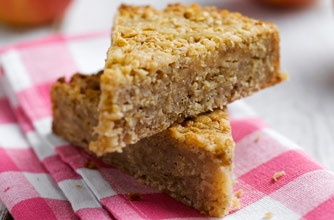
Whether you've got a few chocolate bars leftover from Easter, some fruit that looks like it's seen better days or mixed nuts that have been sitting in the back of your cupboard for months, it's time to make a tray bake! Throw all these sweet ingredients together with a classic cake mix and you've got a delicious treat.
Tray bakes can be savoury too - leftover veggies like the odd carrot or sweet potato that has been separated from the bunch can be chopped, toasted in oil and baked in the oven until soft and crisp. Already cooked meat can be added to the medley for a hearty meal.
Smoothies and milkshakes
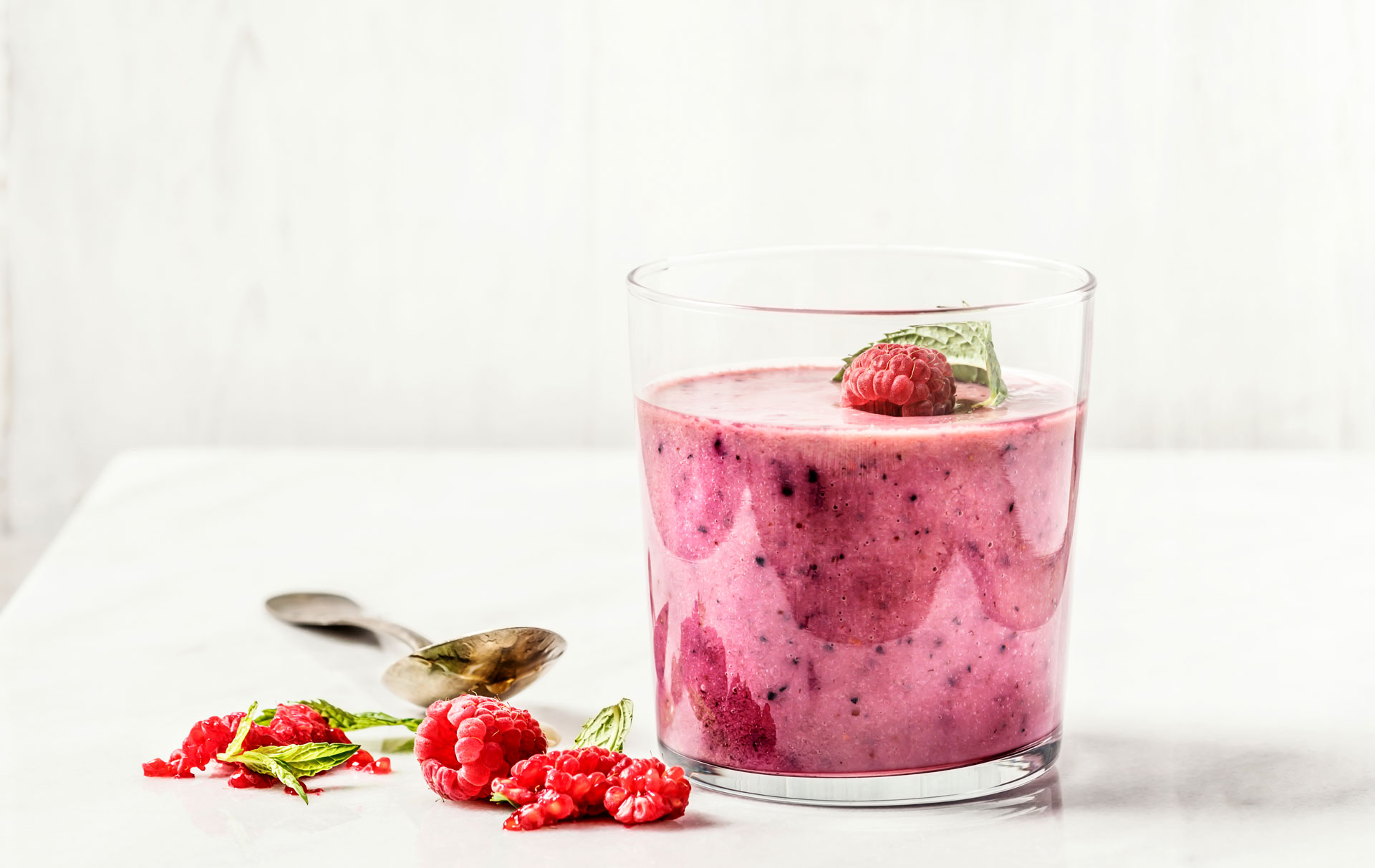
A few sprigs of spinach roaming around in the veggie draw? Half an apple browning in the fridge? Blend them together with some leftover juice and you've got yourself a very healthy smoothie. You can combine pretty much any fruit or vegetables with some juice or yogurt to create a delicious smoothie which can be frozen until needed or served immediately - the choice is yours!
Milkshakes are a great way to use the last bit of milk in the carton. Add a few scoops of ice cream and any leftover biscuits or chocolate you might have tucked away somewhere and get mixing! Yogurt, fresh berries and mixed nuts can be chucked in too.
Cakes
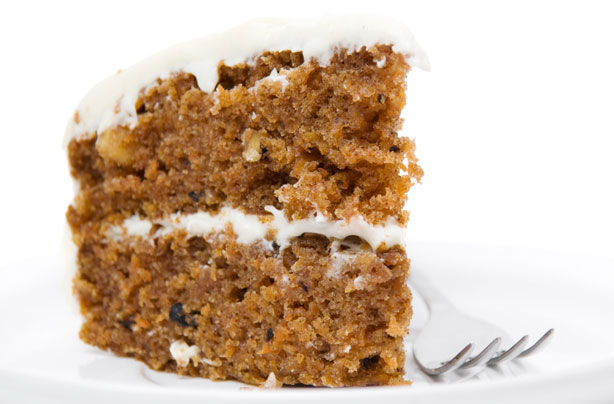
Cakes are a great way to use up the last few scrapes of butter or the lonely egg in the back of the fridge. Fruit, veg, chocolate, nuts... you name it, they can all be added to your cake mix in some shape or form. Make moist veggie cakes like carrot cake, courgette cake or fruity favourites like apple yogurt cake or blueberry muffins. Whatever leftovers you have sneaking around in the kitchen, we're sure you can conjure up a cake or two with them!
Salad
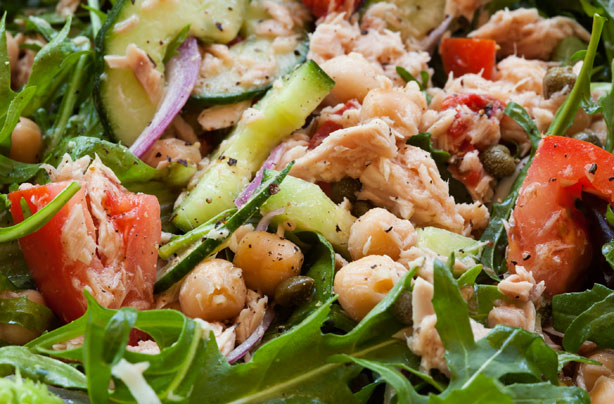
Leftover chicken from last night's roast dinner would be perfect shredded and added to a fresh bed of crisp salad leaves. All you need to do is make a simple dressing and it's ready to be enjoyed. Other cooked meats like lamb or beef are perfect for making a salad too. A couple of grated carrots, a handful of peas and plenty of seasoning and you've just made lunch using up your leftovers - easy peasy!
Miriam Habtesellasie is a freelance lifestyle writer who has contributed content to GoodTo, Woman&Home, Women and Idealhome.co.uk. Miriam is based in London and is a fan of everything interiors, she admits to being spoilt for choice living in the capital. From stunning architecture right the way through to eye-catching department store window displays, she believes there’s always an angle to be found that can translate to our abodes.
-
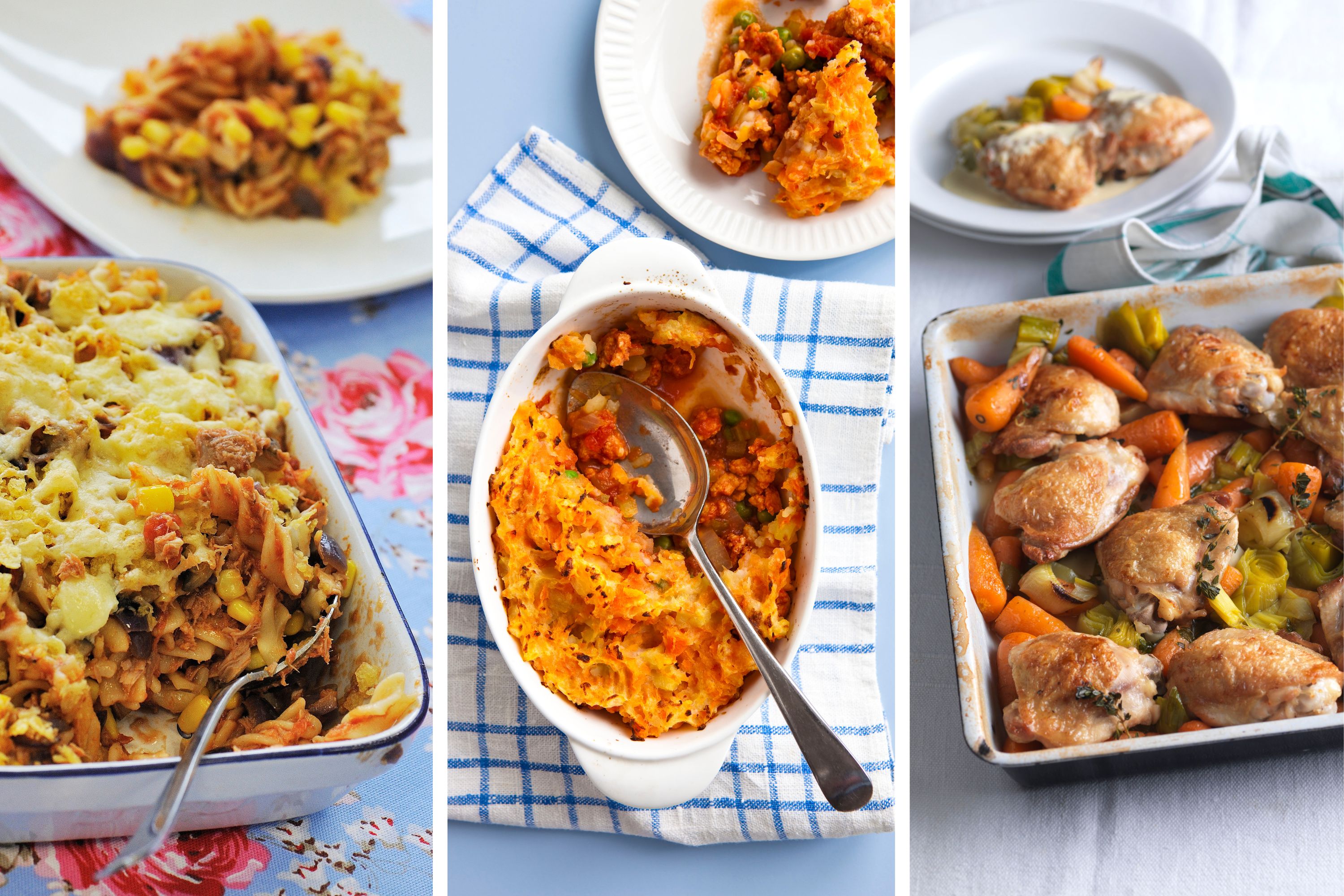 Cheap family meals: 25 budget dinners every parent needs to know about (and they're all under £2 a head)
Cheap family meals: 25 budget dinners every parent needs to know about (and they're all under £2 a head)Casserole, pasta bakes, and more; save money with these cheap family meals - perfect for those on a budget...
By Octavia Lillywhite Last updated
-
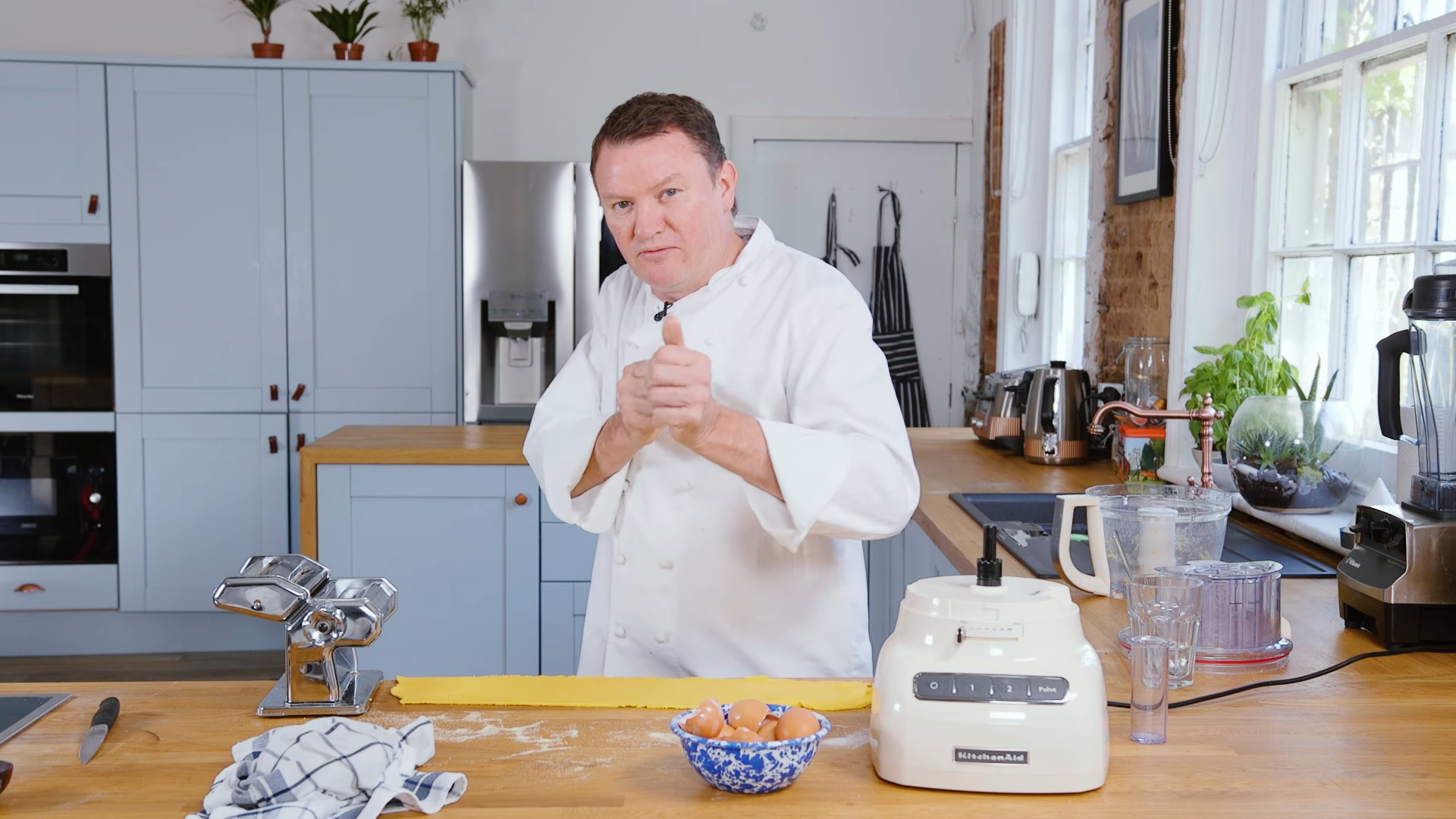 How to make fresh pasta with Theo Randall
How to make fresh pasta with Theo RandallLearn how to make homemade pasta using celebrity chef Theo Randall's signature recipe...
By Keiron George Published
-
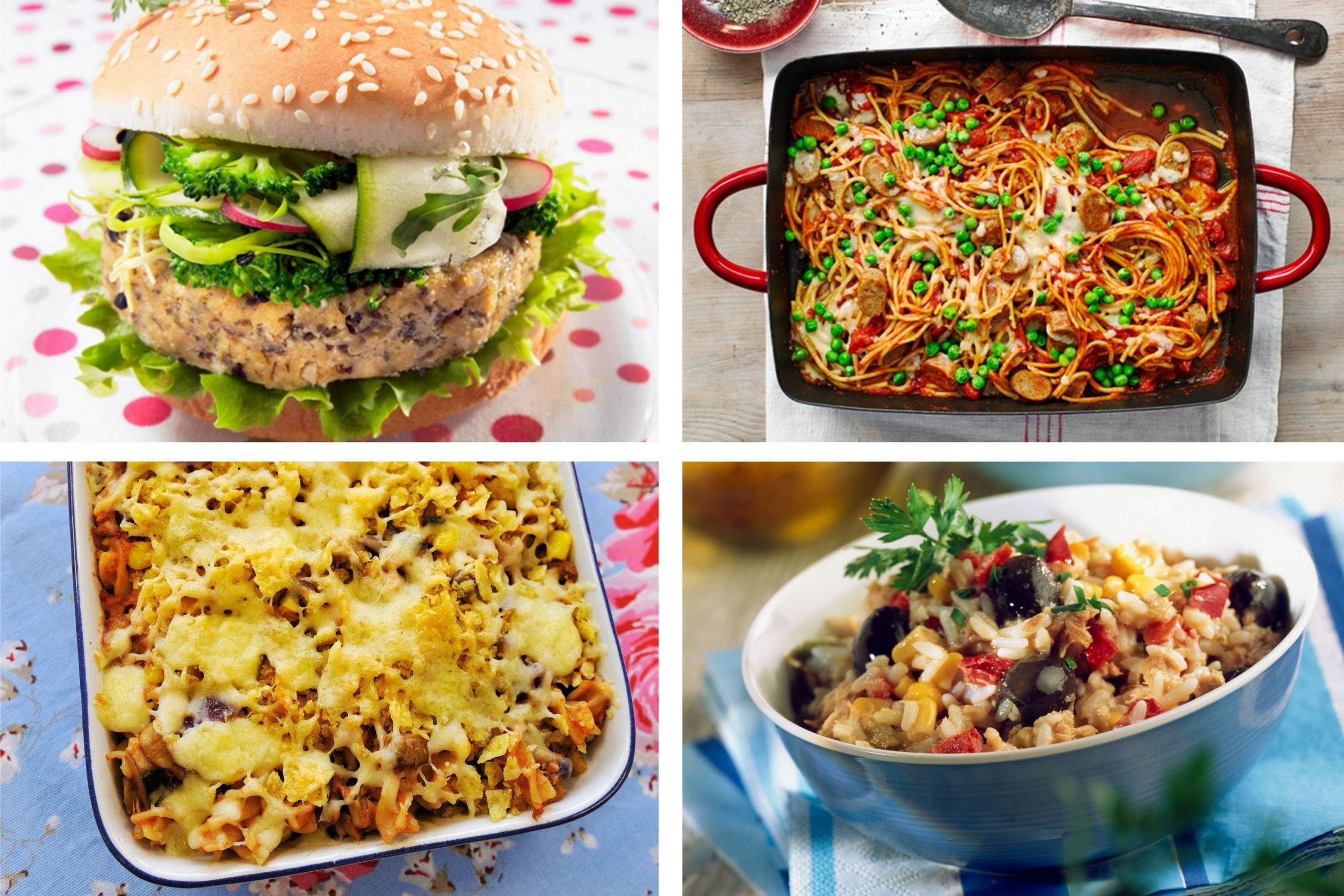 22 money-saving store cupboard meals using tinned or packet ingredients
22 money-saving store cupboard meals using tinned or packet ingredientsMoney-saving recipe ideas using ingredients from your kitchen cupboard - quick, easy and cheap
By Lara Kilner Last updated
-
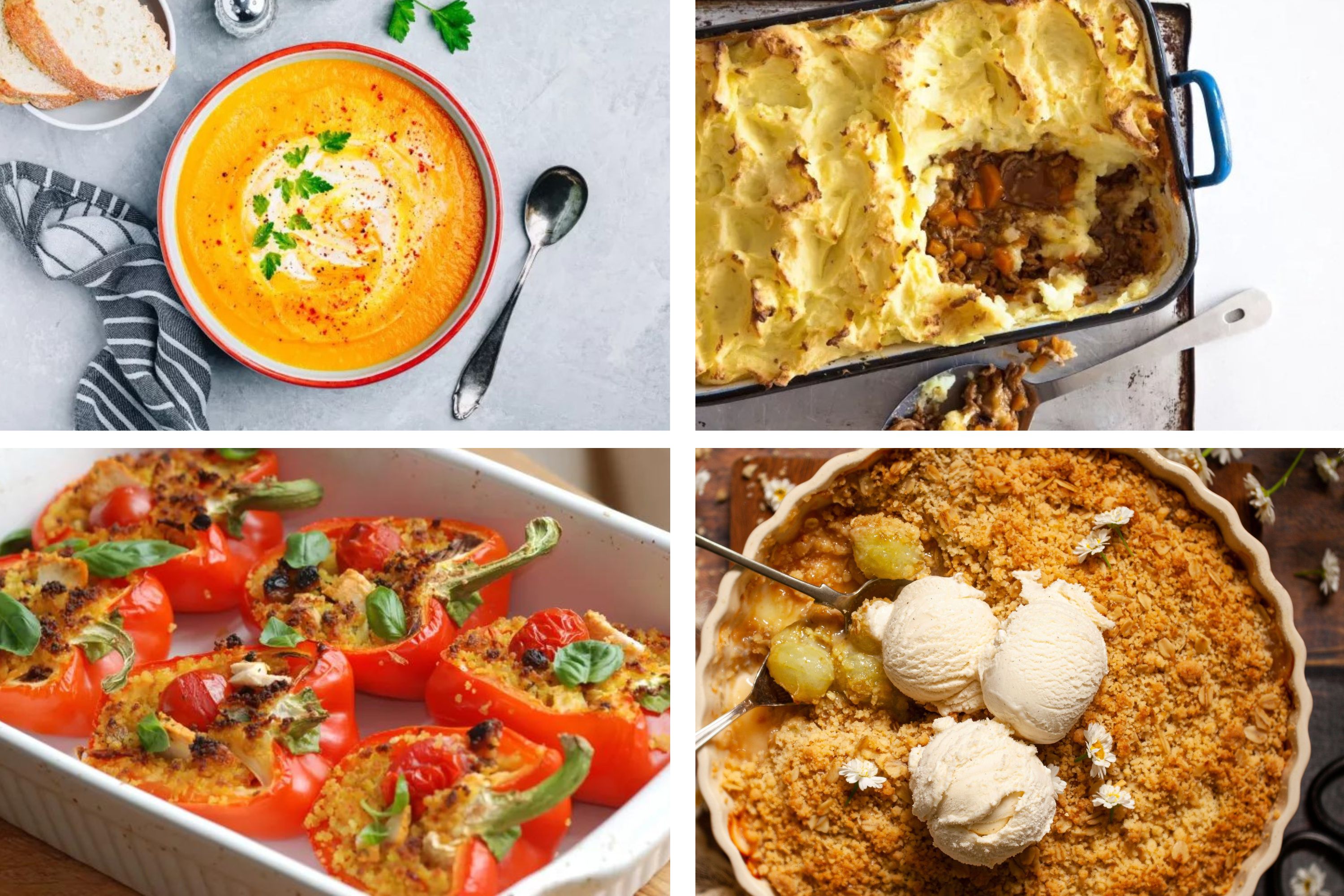 Freezer meals: Money-saving recipes to make in bulk
Freezer meals: Money-saving recipes to make in bulkSave time and money with these family-friendly freezer meals - just perfect for bulk cooking...
By Lara Kilner Last updated
-
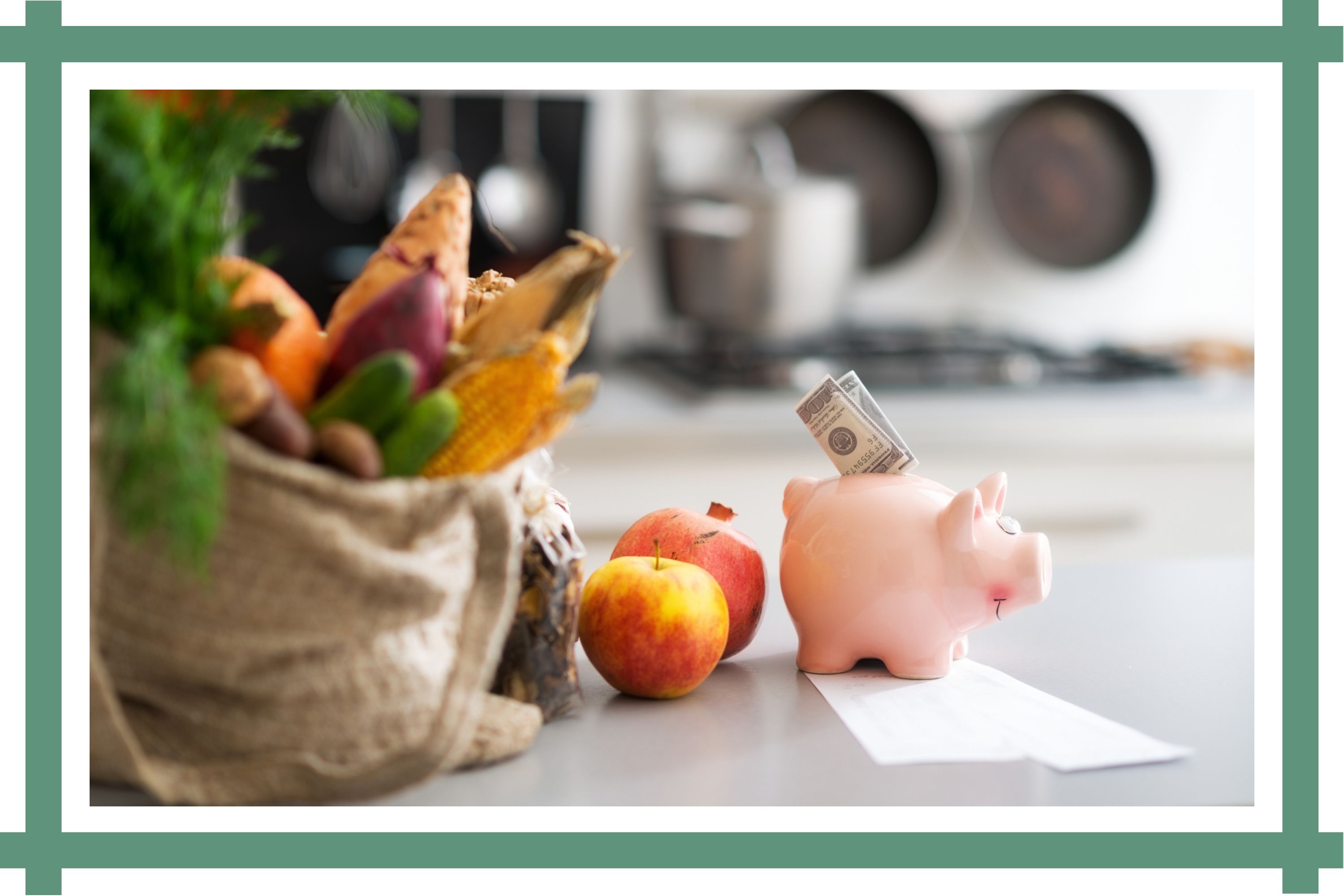 Food hacks: 23 clever tips and tricks to save money
Food hacks: 23 clever tips and tricks to save moneyMake the most out of your food shop with these nifty food hacks, tips, and tricks. From peeling ginger so there's no waste, to using leftovers...
By Lara Kilner Last updated
-
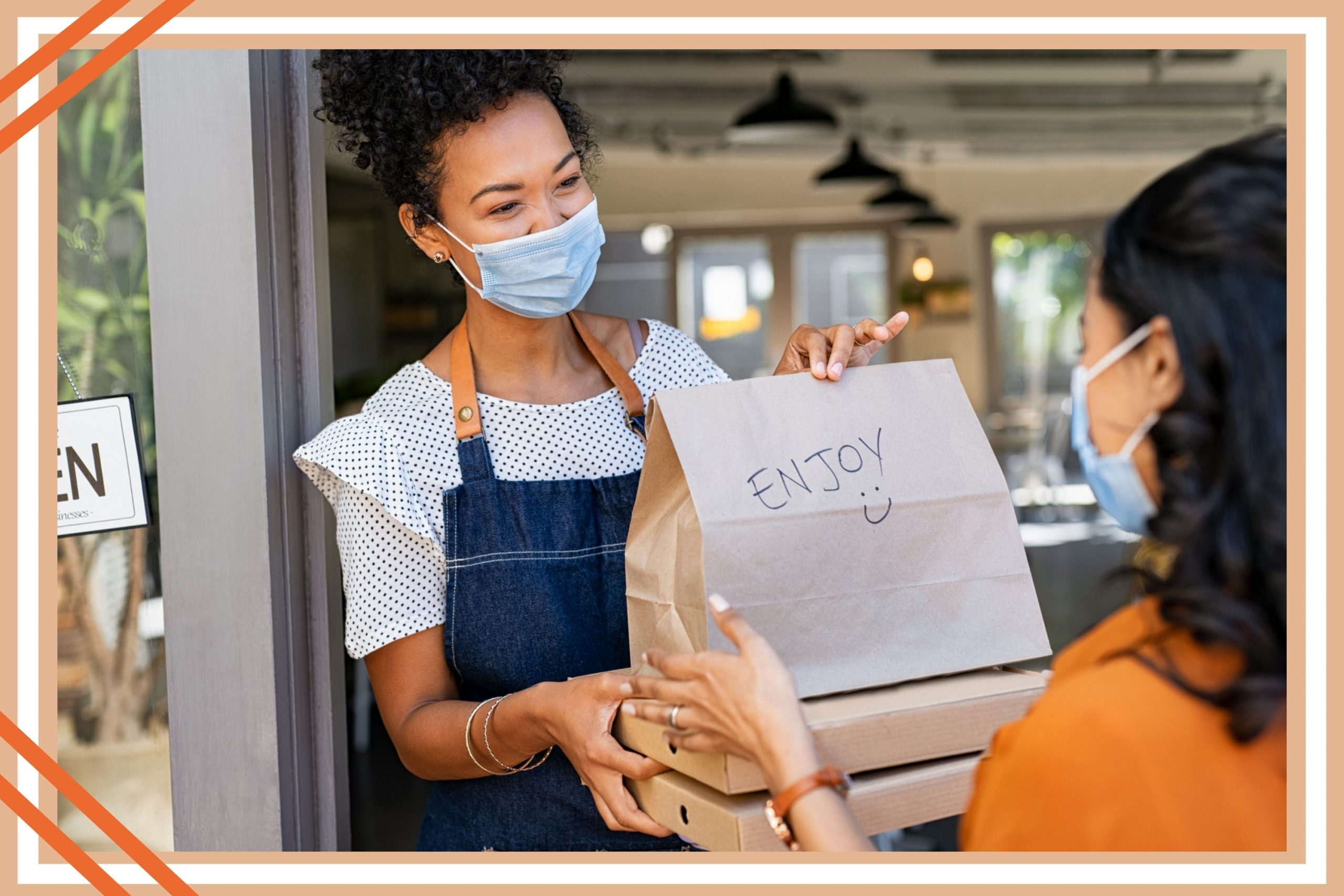 Cheap takeaways: 9 ways to save money on takeaway food
Cheap takeaways: 9 ways to save money on takeaway foodBy Lara Kilner Last updated
-
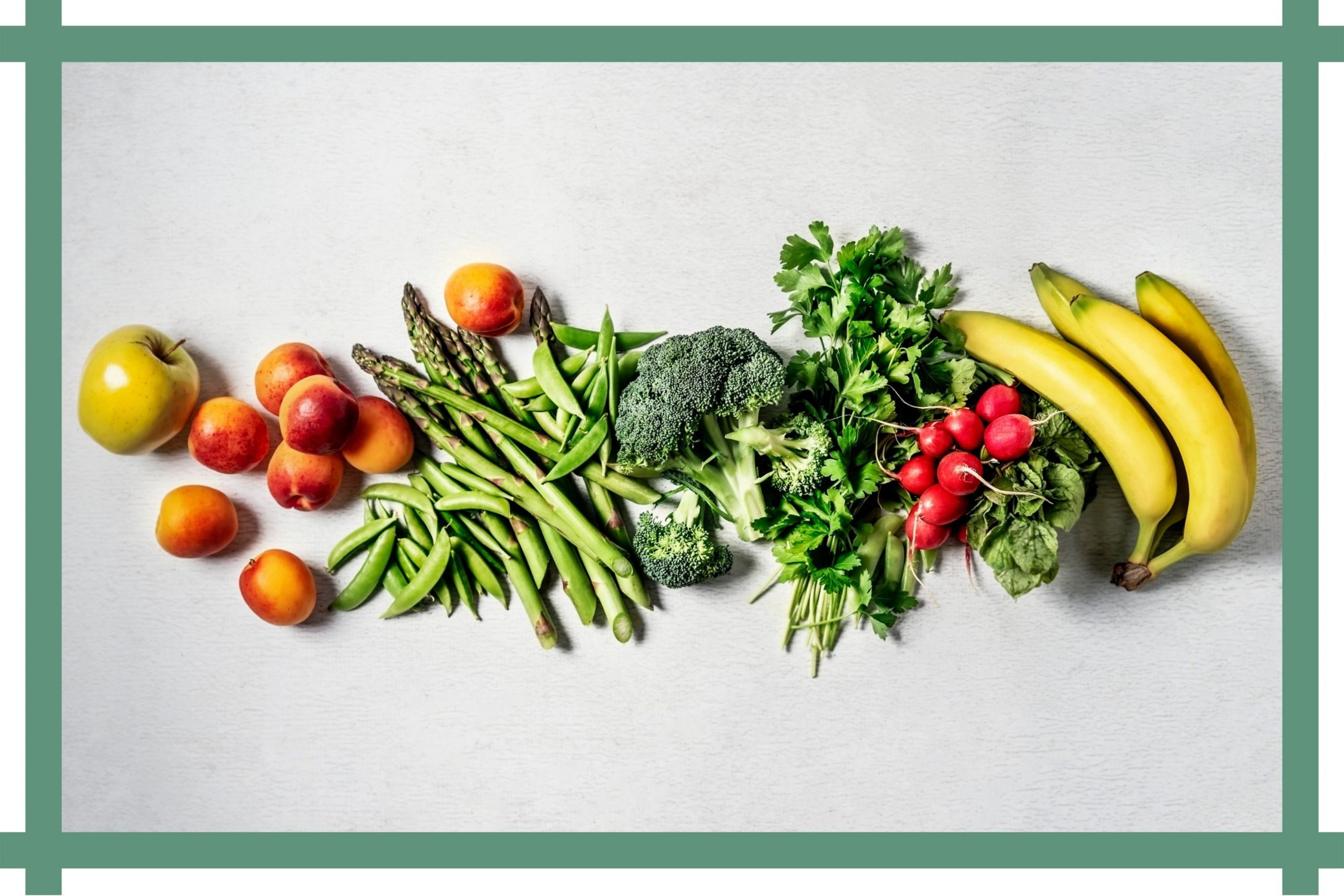 How to keep fruit and vegetables fresher for longer
How to keep fruit and vegetables fresher for longerBy Lara Kilner Published
-
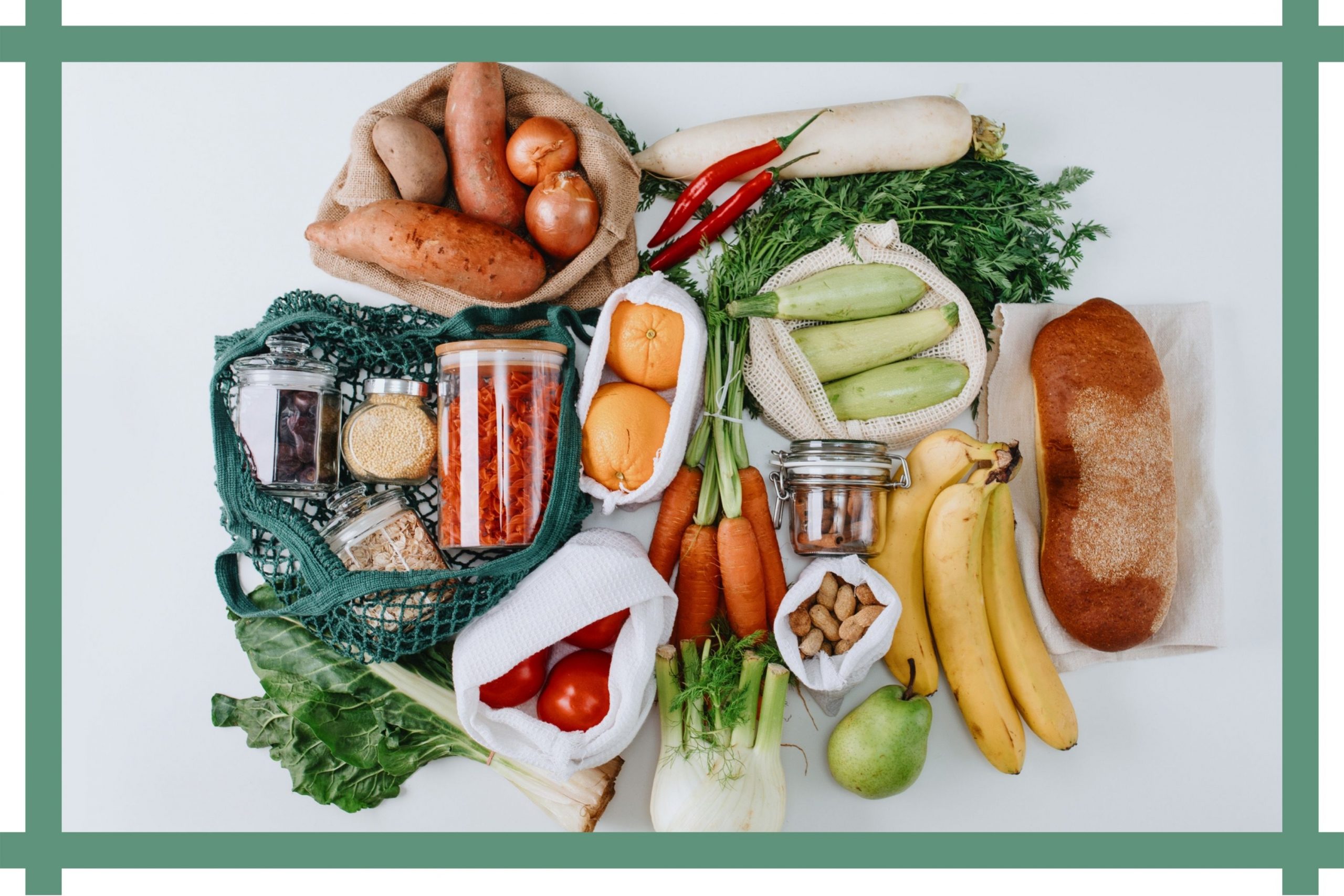 How to reduce food waste: 17 efficient ways to save money
How to reduce food waste: 17 efficient ways to save moneyBy Lara Kilner Published